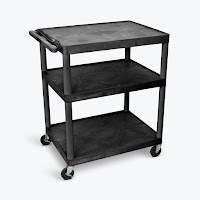High-Visibility Vests: Things to Consider When Buying One
For workers on certain job sites, standing out is a must—literally. Those working in areas with struck-by hazards and low-light visibility need to be seen to prevent accidents and injuries. This calls for a special personal protective apparel: a hi-vis vest.
High-visibility apparel is a type of clothing made with a luminescent fabric and a reflective material. Designed to make a wearer easily discernible, high-visibility garments can help alert machine operators and drivers of the presence of workers, even in low-light conditions. The American National Standard Institute (ANSI) even requires certain kinds of workers to wear this clothing.
Before you purchase a high-visibility vest for the job, let’s take a look at some of the factors of a quality hi-vis vest.
High-visibility apparel is a type of clothing made with a luminescent fabric and a reflective material. Designed to make a wearer easily discernible, high-visibility garments can help alert machine operators and drivers of the presence of workers, even in low-light conditions. The American National Standard Institute (ANSI) even requires certain kinds of workers to wear this clothing.
Before you purchase a high-visibility vest for the job, let’s take a look at some of the factors of a quality hi-vis vest.
Brightness & Reflective Material
Depending on the area you’re working in, you have to get a high-visibility vest with the right color. If you’re assigned to the day shift, wearing a fluorescent green high-visibility vest is sufficient. In low-light areas, you have to wear a fluorescent high-visibility vest with a reflective material. But in dark areas, you should be using a brightly colored vest with a retroreflective, glow-in-dark fabric.Fabric & Fit
Uncomfortable clothes can just be as hazardous as non-hi-vis vests. So you have to find a vest that’s lightweight and comfortable to wear. Most safety vests are made of breathable mesh, which allows airflow. You also need to consider how well the vest fits you. It should fit on top of your clothing, but it shouldn’t be so loose that it can cause snagging incidents.Types
ANSI has established three types of high-visibility vests:- Type O (“off-road”) vests are for those working in areas with struck-by hazards, excluding highway rights-of-way or temporary traffic control (TTC) zones. Workers stationed in warehouses with equipment traffic and mines can wear these vests.
- Type R (“roadway”) vests are designed for workers in highway rights-of-way, TTC zones, and sites with heavy machinery and work vehicles. These include roadway construction workers, towing operators, airport ground crew, and school crossing guards.
- Type P (“public safety”) vests are made for emergency responders and law enforcement in areas with exposure to traffic. Firefighters, emergency response teams, and accident site investigators can wear Type P safety vests.
Performance Classes
ANSI has also identified four performance classes, each of which has certain minimum requirements for the design of the hi-vis vest.- Class 1 safety vests are typically worn in Type O or off-road areas where traffic speed is below 25 miles per hour. They offer a minimum amount of visibility to make a wearer stand out in a non-complex background.
- Class 2 safety vests offer better visibility for workers in Type R or roadway areas where traffic speed is over 25 miles per hour. They also provide workers with higher visibility in poor weather conditions.
- Class 3 safety vests provide workers with the highest visibility in areas where traffic speed exceeds 50 miles per hour. These vests have to cover the arms, and they can be combined with high-visibility gaiters and pants for maximum visibility.

Comments
Post a Comment